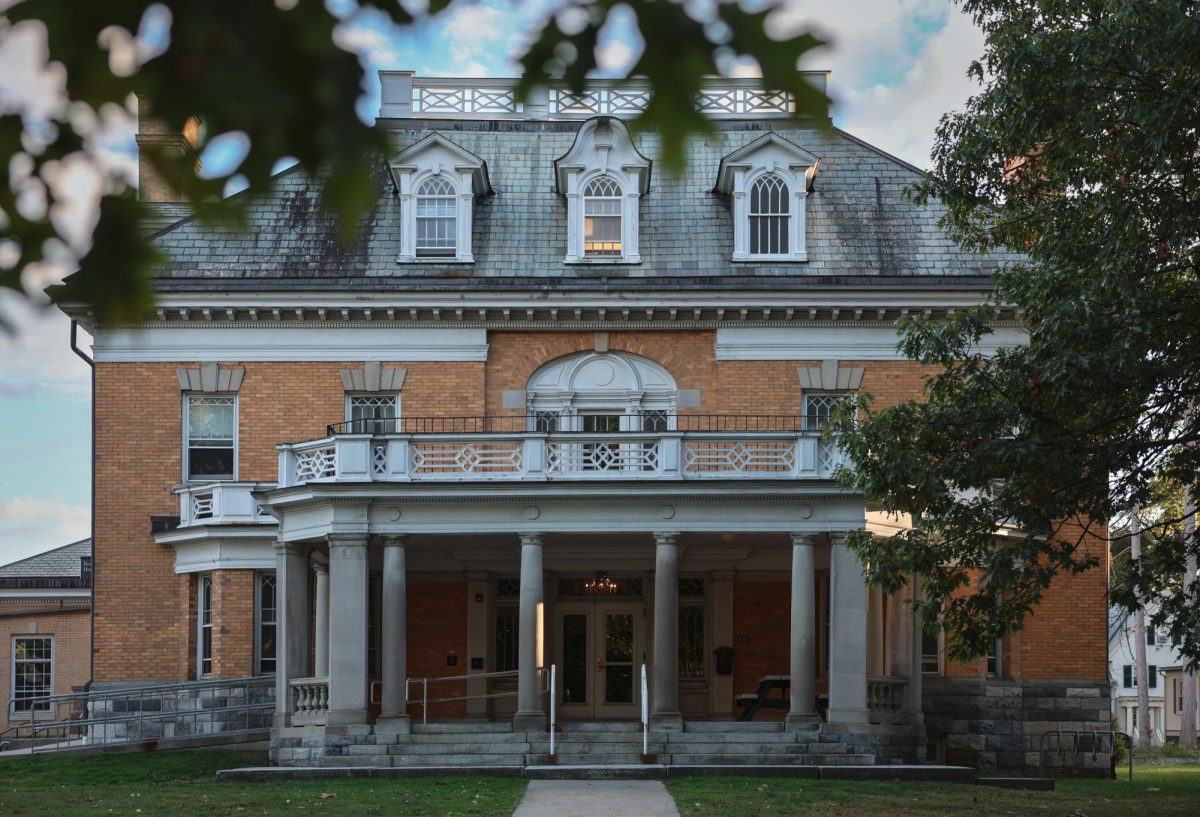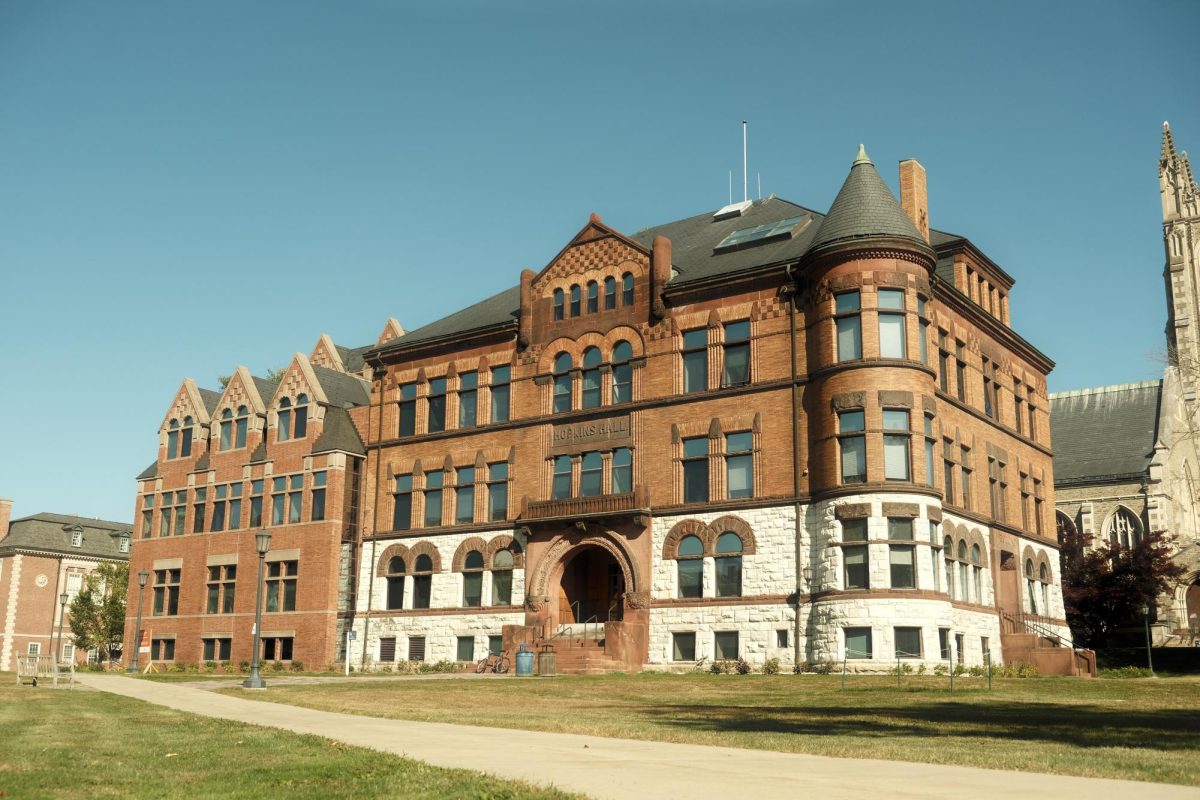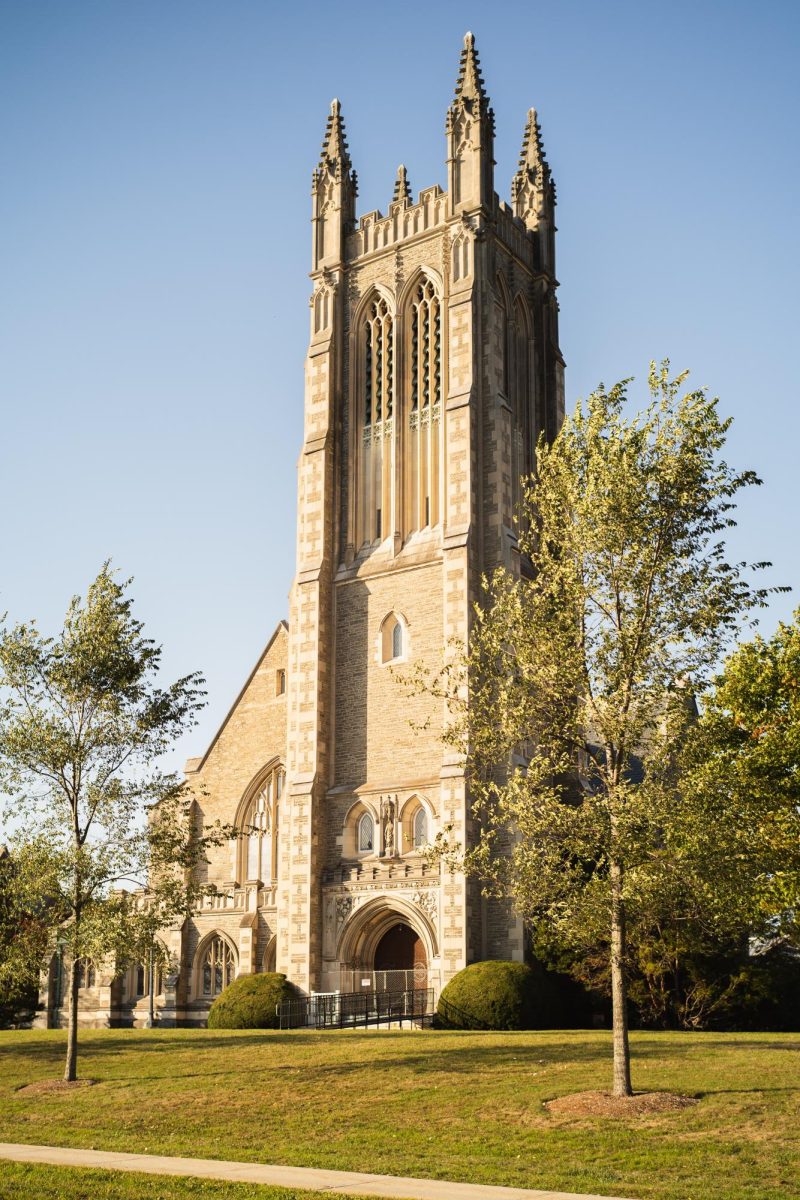In a Claiming Williams event last Thursday examining the Difference, Power and Equity (DPE) requirement, approximately 40 students, faculty members and administrators reviewed the history of the requirement and discussed potential reforms. The event, called “Reworking the DPE Requirement,” was planned and hosted by Michael Nettesheim ’20, Sim Sohal ’20 and Summer-Solstice Thomas ’20, who could not be in attendance.
Sohal and Nettesheim opened the event by sharing their own thoughts on the requirement, which mandates that all students enrolled at the College take at least one DPE-designated course before graduation. “In our experience at Williams,” Nettesheim said, “we’ve run into our own personal frustrations with the DPE requirement and the degree to which it accomplishes the goals which we assume were part of its inception.”
“That’s why we created this space to have an open and collective brainstorm and guided discussion about what the goals of the DPE are … and what changes could be made to closely connect the intent behind the program” with the outcomes it produces, Sohal continued. Sohal and Nettesheim told the Record after the event that they had previously met with President Maud S. Mandel, who attended the event but wanted a broader range of perspectives to bring to the administration.
“We’ve had our experiences and our beliefs about what is good or bad about the DPE [requirement], but getting 40 to 50 people in a room, there’s going to be such a vast array of experiences,” Nettesheim said. After Sohal and Nettesheim introduced the event, Professor of Chinese Li Yu provided the attendees with a brief history of the DPE requirement.
“I joined the Williams faculty in 2005,” Yu said. “At the time, they had a requirement that was called Peoples and Cultures.” Yu described the Peoples and Cultures requirement as “intended to help students to begin to understand the cultural diversity of American society and the world at large, so that as citizens of an increasingly interconnected world, they may become better able to respond sensitively and intelligently to peoples of varied social backgrounds and frameworks.”
“When I arrived here, there were already a lot of faculty members who were expressing dissatisfaction with that requirement,” Yu said. “One of the major problems was that it was essentializing this divide between ‘us’ and ‘the other.’ We are studying ‘the other people.’ So this is kind of an imperialist mode of thinking.”
The requirement “made sense when there were very few people at Williams who were ‘not us,’ not white and male,” said Professor of History Chris Waters, who was in attendance at the event, in a later interview with the Record. “A lot of students of color rightly began to say, why should we take courses to learn something about us?” In the 2008-2009 academic year, after pressure from faculty and students, the Peoples and Cultures requirement was replaced with the Exploring Diversity Initiative (EDI), which operated similarly but with a new guiding mission.
Rather than simply focusing on “the other,” Yu said, EDI’s mission was to “encourage students to reflect critically and self consciously on the operations of difference in the world, and provide them with some of the tools they will need for a lifetime of engagement with the increasingly diverse world in which we live.” According to Yu, EDI quickly ran into two problems following its implementation. The first was a dispute over the definition of diversity, which Yu said “everybody understands … in their own way.”
The vagueness in how diversity was conceptualized led to inconsistent expectations across EDI courses. Another problem surfaced in the designation of courses as EDI, a task which was at first decided by a faculty member declared to be “EDI tsar,” but was eventually given to a small faculty committee.
“That kind of administration also causes frustration among faculty members,” Yu said, because “they feel that there is this police there telling us whether our courses should count or not.” Waters, who was the implementing director of EDI and chaired the EDI committee for five years, noted that the process was also sometimes complicated by professors insistent on maintaining their course’s EDI label.
“Sometimes we had our arm twisted to listing a course as an EDI course,” he said, “and then students would come to me and complain and say, ‘Why is this an EDI course?’” From 2015 to 2017, the faculty once again determined that the program needed an overhaul, and replaced EDI with the DPE requirement which was implemented in the 2018-2019 academic year.
The switch from EDI to DPE brought with it three major changes. First, the focus of the requirement was sharpened, with the broad strokes of “diversity” narrowed down to more specific stipulations that the class thoughtfully address difference, power and equity. Second, the administration of the requirement was changed, as faculty members could designate their own courses as DPE with the consent of the heads of their departments, rather than going through a committee. And finally, the requirement gained a greater emphasis on pedagogy rather than simply on content.
For Waters, however, the changes made were not enough. The switch from EDI to DPE “is like shifting deck chairs on the Titanic,” Waters said. “Because ultimately, you have the same problems with DPE that you had with EDI, namely that the rubric is very general and very broad and it means nothing and everything.”
After presenting the assembled crowd with this history and the challenges the DPE requirement has faced, Sohal and Nettesheim gave participants the time to develop their own thoughts and ideas in small groups of five or six. Participants were first asked to identify the problems they felt were present in the DPE requirement. The answers varied greatly, including opacity in the DPE designation process, a lack of emphasis on personal reflection and pedagogy in DPE courses, an absence of DPE in Div. III majors and tokenization of students of marginalized identities.
Waters said that in his discussion, participants focused on how they perceive there to be little difference between courses that are and are not designated as DPE. “At our table yesterday, we had people looking at their phones to see if they’d actually done a DPE course, which to me suggests exactly the same problem that we had with EDI,” he said.
Nohely Peraza ’20, who attended the event but sat at a different table from Waters, said that a similar problem occurred to her. “I felt confused as to why [WGSS 101] met the diversity requirement when there were classes, like the Toni Morrison class that I took [which was also designated as EDI], that focused entirely on viewing things critically through a lens of historical ‘othering’ and racial divides in the U.S.,” Peraza said.
After these problems and others were vocalized, Sohal and Nettesheim directed the gathered students and faculty to formulate ideas for potential changes to the system which could be brought to the administration. Like the previous question, the answers from the room varied greatly. Some participants argued that the requirement in its current form was too slight, proposing that students be required to take two DPE classes, that each major track incorporate elements of the DPE philosophy or that every single class at the College include DPE elements in its syllabus. Others suggested that the requirement instead take the form of a required first-year seminar or Winter Study course, wherein first-years learn about difference, power and equity early in their time at the College. Still others promoted smaller changes to the existing DPE system, including granting the ability to nominate non-DPE classes for a DPE designation or encouraging DPE classes to place greater emphasis on reflection and vulnerability.
Peraza was among those advocating for major structural changes to the DPE requirement, arguing that the requirement in its current form is not sufficient. “There’s people studying themselves and then there’s people studying other people,” she said. “Some people still hold biases walking on the sidewalk. It’s definitely a larger thing and one class is definitely not enough.” Waters, too, was a proponent of significant changes, but his ideas differed from Peraza’s. He was among those in support of a mandated Winter Study course. “It would be like Williams Reads, but more imaginative and creative and more sustained,” he said.
Yu said that any change to the DPE requirement would have to gain the support of both students and faculty. A significant alteration, Yu said, “would require coordination, would require infrastructure, [and] would require buy-in from students and from faculty members.” Yu said that she supports “strengthening” the DPE requirement, rather than reworking it.
After the event, which lasted nearly two hours, Sohal and Nettesheim expressed their satisfaction with the event’s turnout and participation. “I’m pretty happy with how it went, and there’s obviously always learning to be done when you do an event,” Nettesheim said. Waters added that the multitude of voices at the event was helpful, although it prevented there from being any single solution presented. “What came out of [the event] was that nothing can come out of it,” he said. “There was no single way forward. There were a myriad of different beliefs, ideas, people who were happy with this and unhappy with that.”
For Sohal, the ultimate success of the event was simply putting the subject into the spotlight at all. “A lot of people just don’t really think much about it,” she said, “and I feel like part of the important thing is to get people to think about it.”








